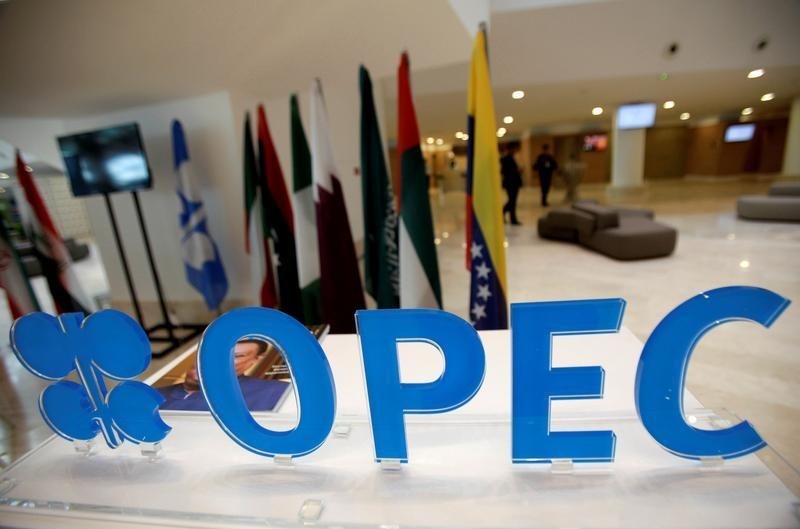Investing.com — It had all the makings of a grand show, and a show is what it has been: oil prices jumped some 2% in a preliminary rally Monday fired by Saudi Arabia’s promise of deeper oncoming output cuts, before the trade wisened up to settle at a meekly higher close.
New York-traded West Texas Intermediate, or , crude settled up 41 cents, or 0.6%, at $72.15 per barrel. The U.S. crude benchmark ran up to $74.31 earlier.
London-traded crude settled up 58 cents, or 0.8%, at $76.71. The global crude gauge peaked at $78.23 during the session.
“The Saudis are going at it alone in doing whatever it takes to stabilize oil prices,” said Ed Moya, analyst at online trading platform OANDA. “The Saudi problem is that energy traders aren’t believing the kingdom has enough power to sway all OPEC+ to deliver meaningful action.”
Oil revenue is the lifeblood of the economies in OPEC, or the Organization of the Petroleum Exporting Countries, a 13-member Saudi-led group whose main objective is to be the price-setter of the commodity. Ten other oil producing states, including Russia, that aren’t OPEC members have also been keeping their output closely in line with the group’s for the sake of price. The 23-nation alliance is collectively known as OPEC+.
Oil prices jumped ahead of Monday’s regular session in New York as traders reacted at the start of Asian trading to Saudi Energy Minister Abdulaziz bin Salman’s remarks that the kingdom would slash an additional one million barrels per day in output from next month while other oil producers in OPEC+ maintain through next year production cuts they had pledged earlier.
The bullish charge in oil prices faded soon, however, as market participants considered the economic headwinds and other challenges that had made this year particularly difficult for those long the market.
Analysts at Goldman Sachs itself said the output deal was “moderately bullish” for oil markets and could boost December 2023 Brent prices by between $1 and $6 a barrel depending on how long Saudi Arabia maintains output at 9M barrels daily.
“The immediate market impact of this Saudi cut is likely lower, as drawing inventories takes time, and the market likely already put some meaningful probability on a cut today,” the bank’s analysts added.
Saudi Arabia went ahead and announced a separate hike in prices of its flagship crude Arab Light to Asian buyers in July to a six-month high.
Reuters observed in an analysis that many of the OPEC+ reductions will have little real impact as the lower targets for Russia, Nigeria and Angola bring them into line with their actual production levels. In contrast, the United Arab Emirates (UAE) was allowed to raise output targets by 200,000 bpd to 3.22M bpd to reflect its larger production capacity.
“The Saudis are basically giving up market share here and that strategy won’t work over the long term,” said Moya.
But all is not lost as the advance of summer could bring a surge in travel demand, said Moya.
“The risk of more (Saudi) cuts seems unlikely given the market reaction, but also because the demand side of the equation should provide some stability for prices. The U.S. economy is about to show a very robust summer travel season that should mean gasoline and jet fuel demand is going to be very strong. The demand situation from Asia can’t be that bad if the Saudis are also able to raise prices.”
Read the full article here








